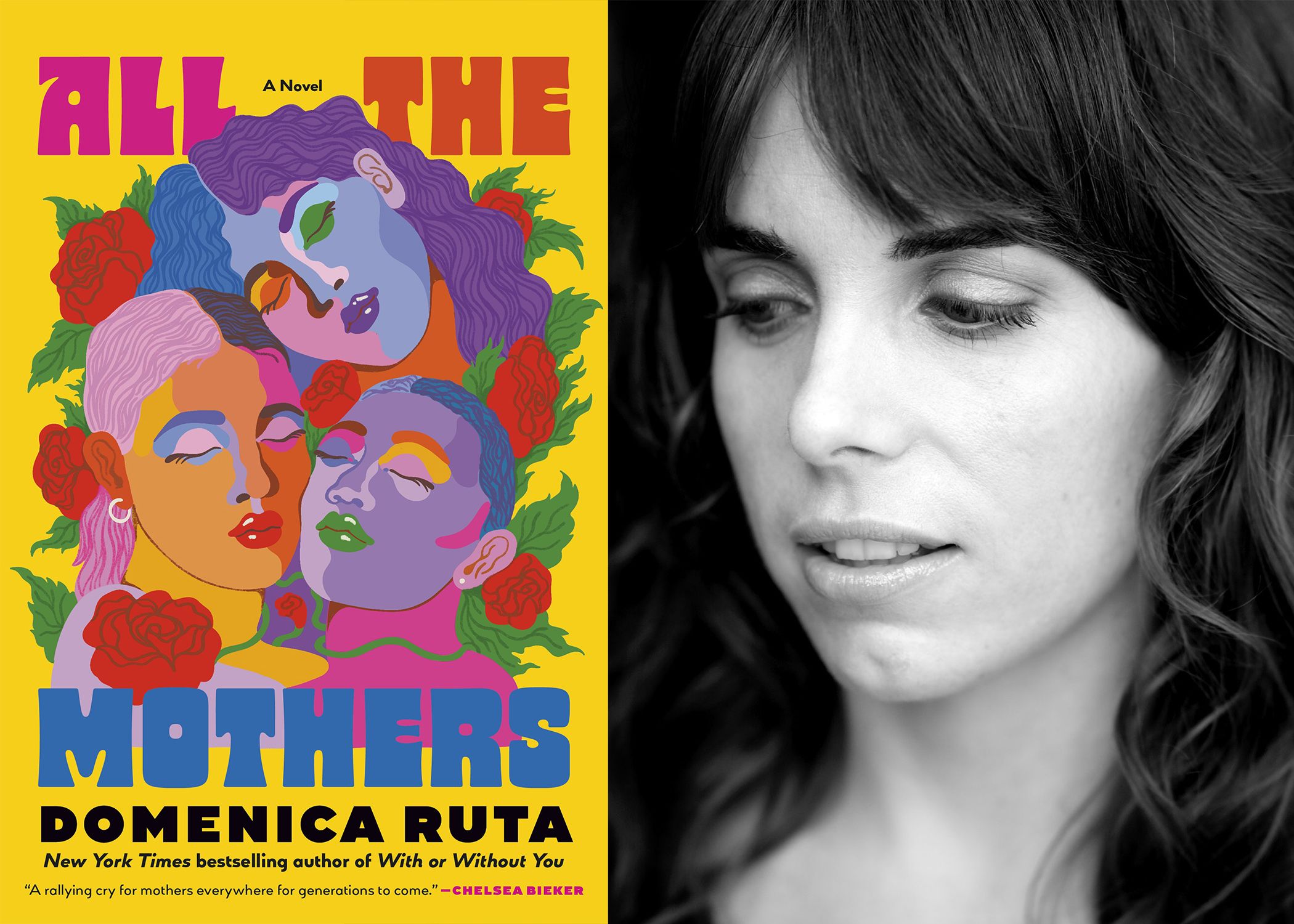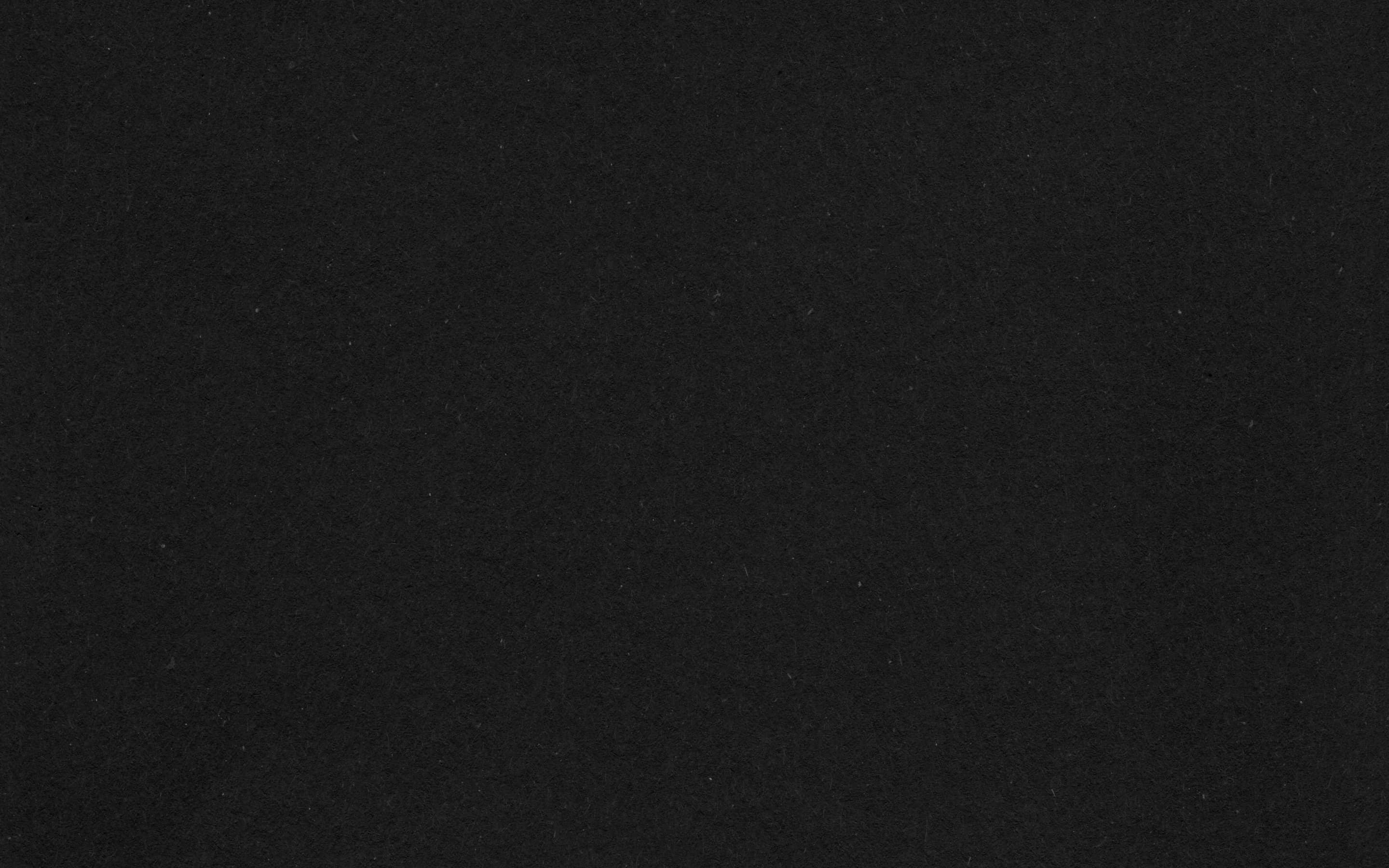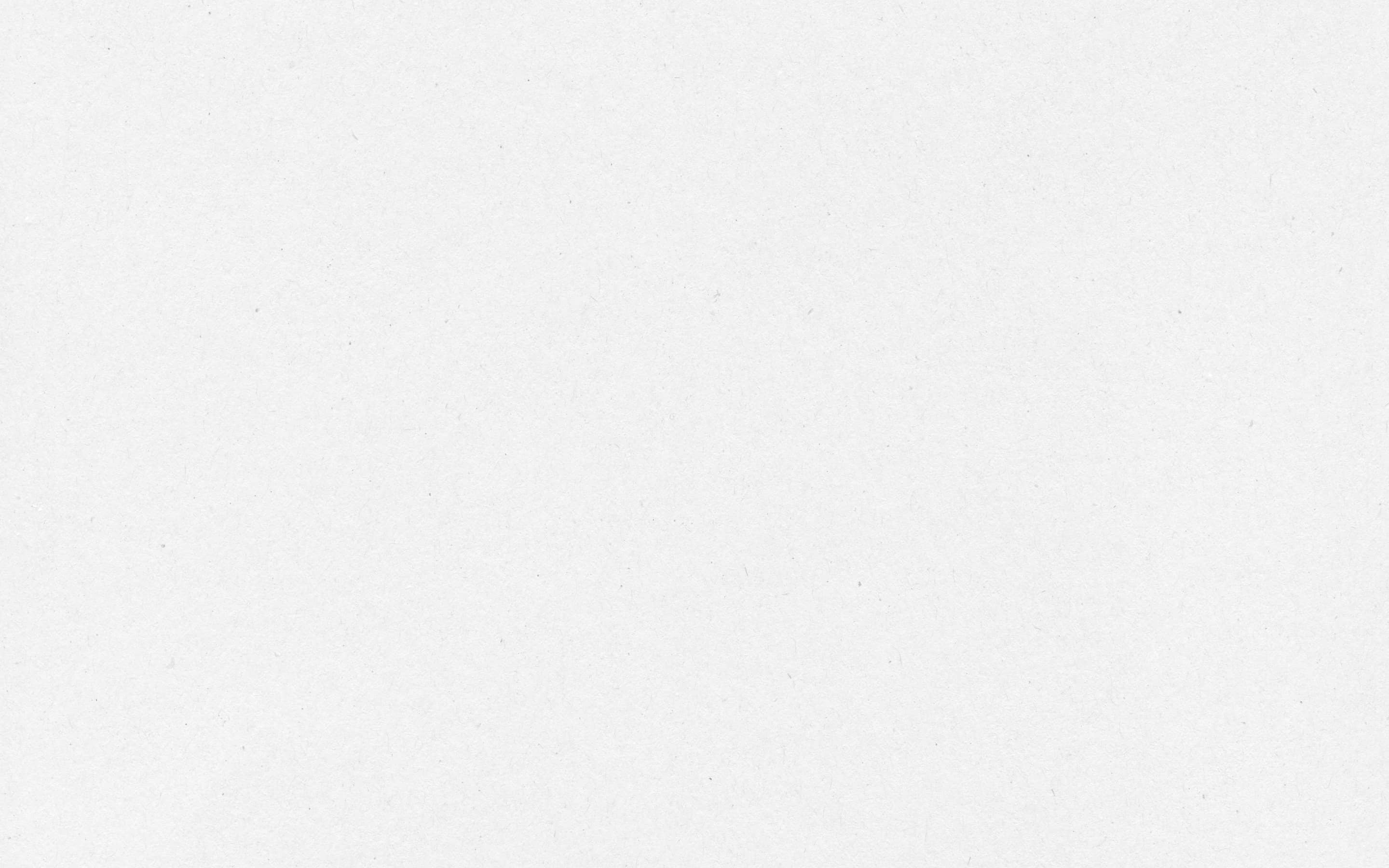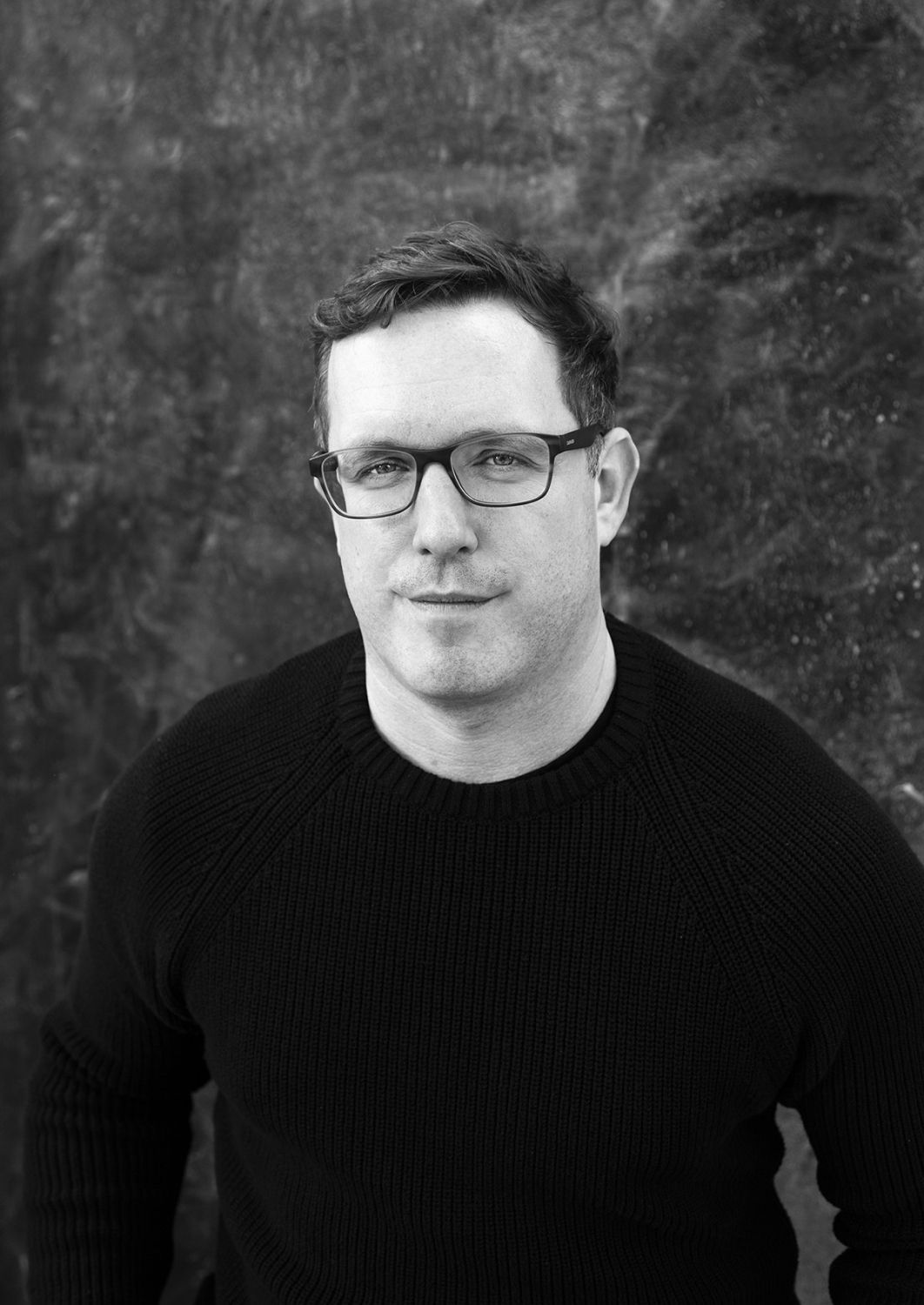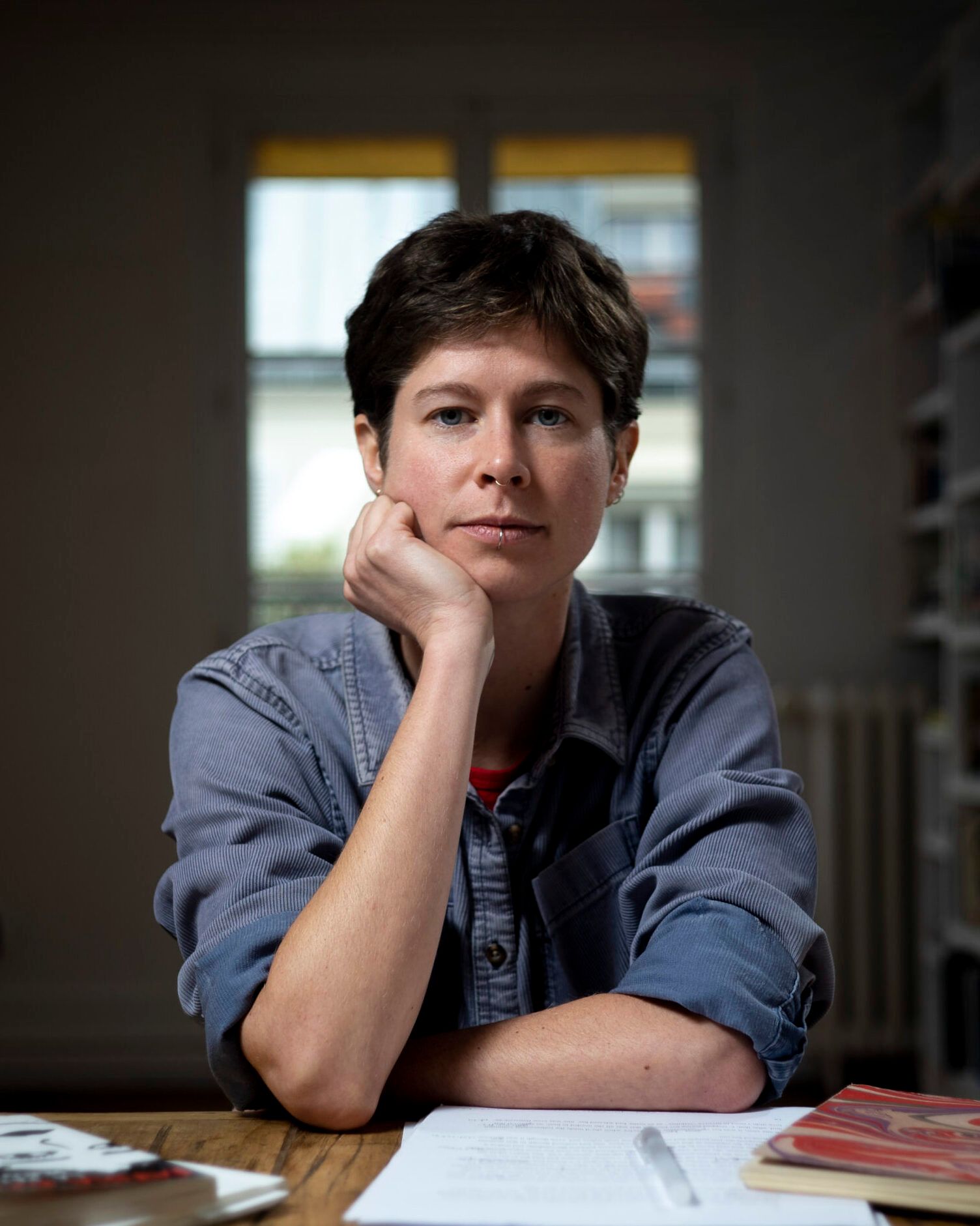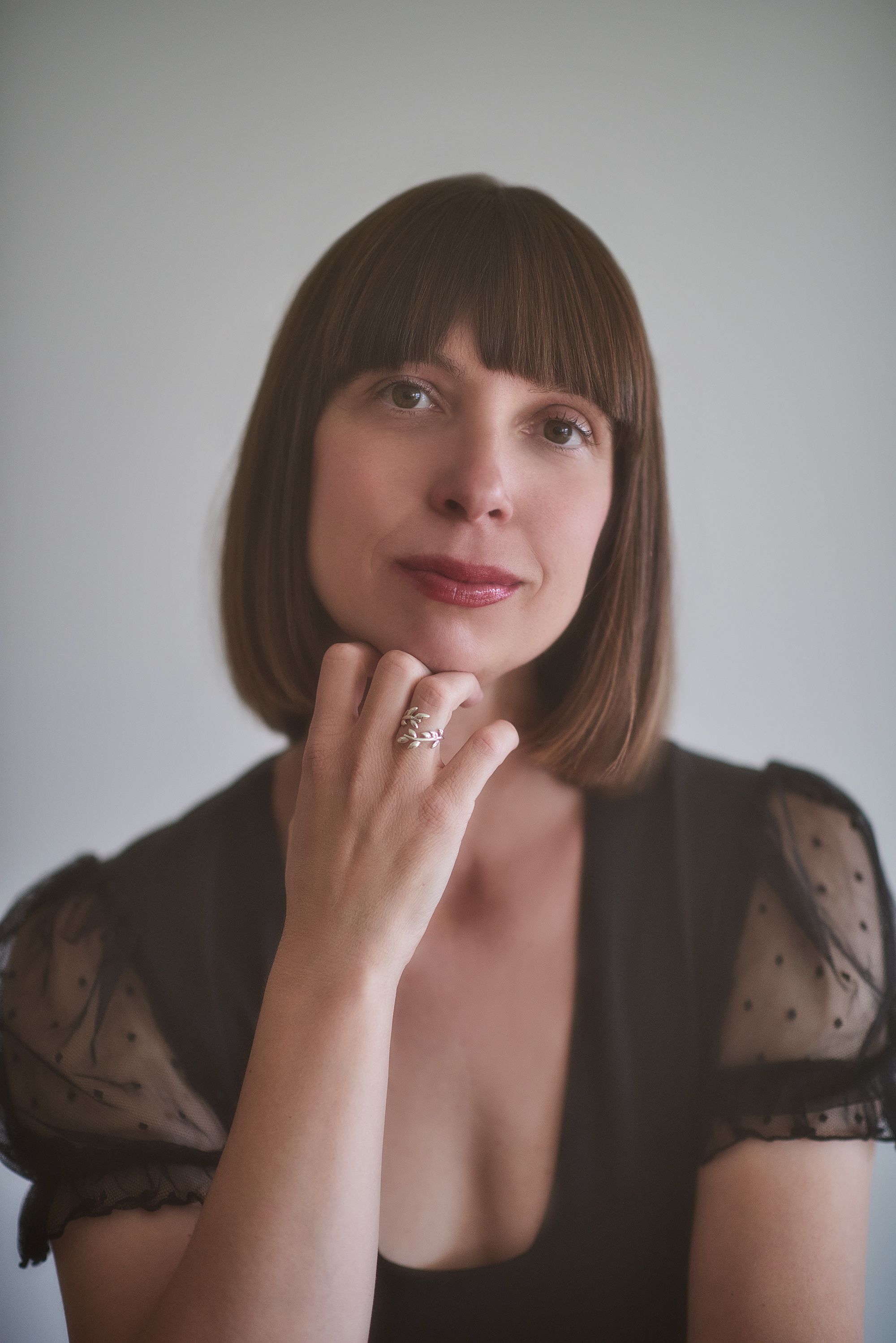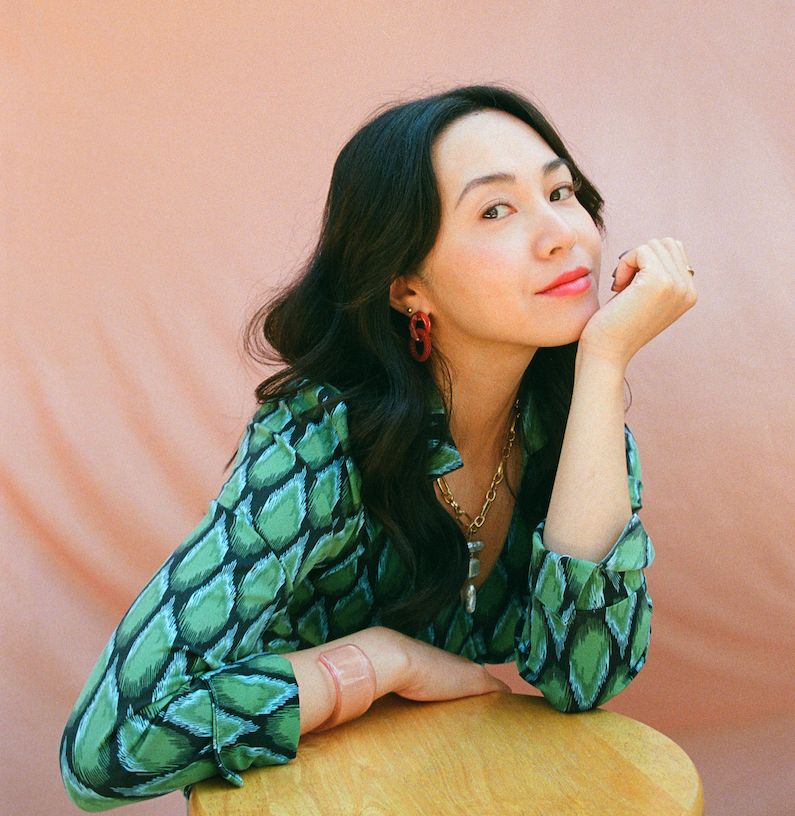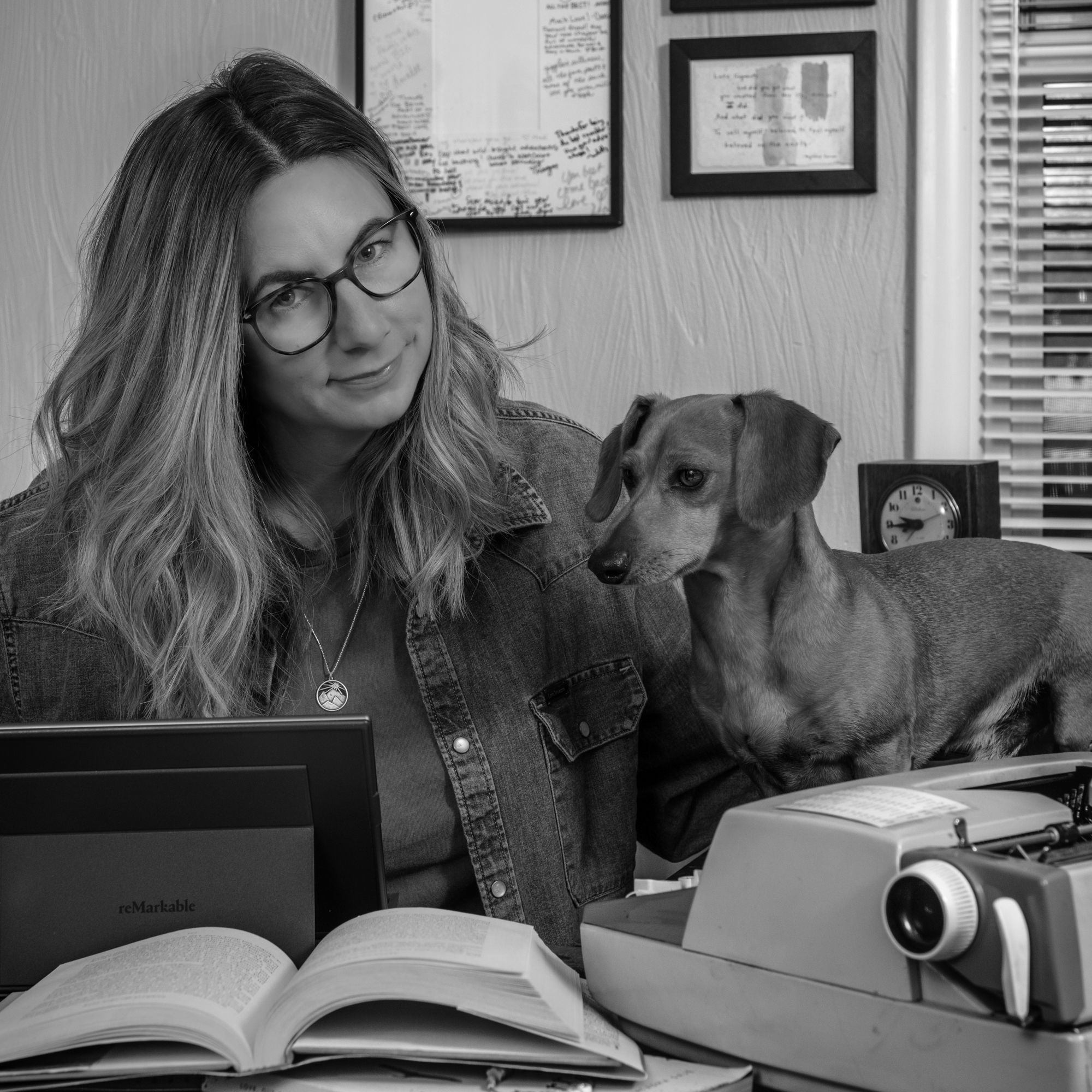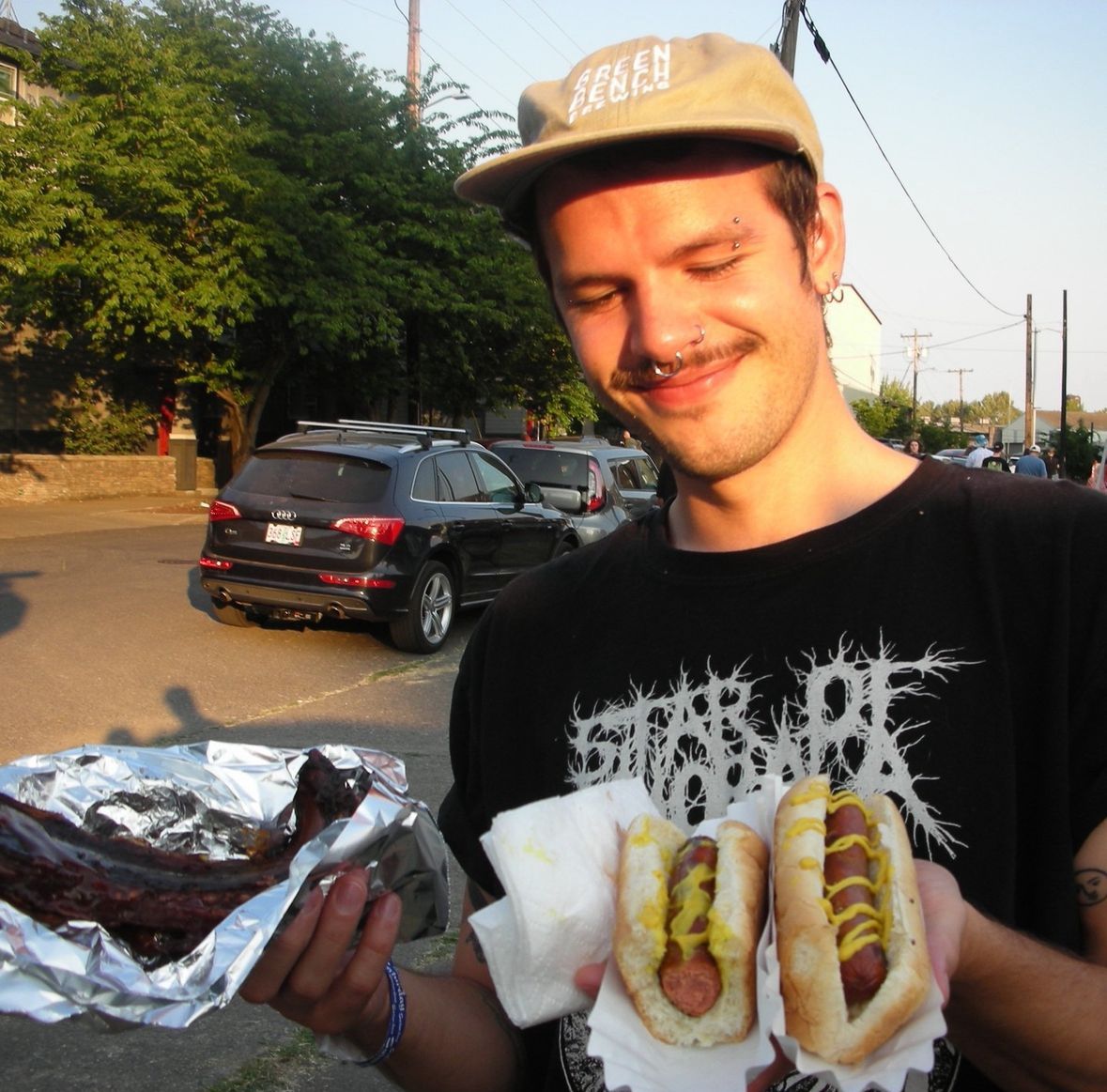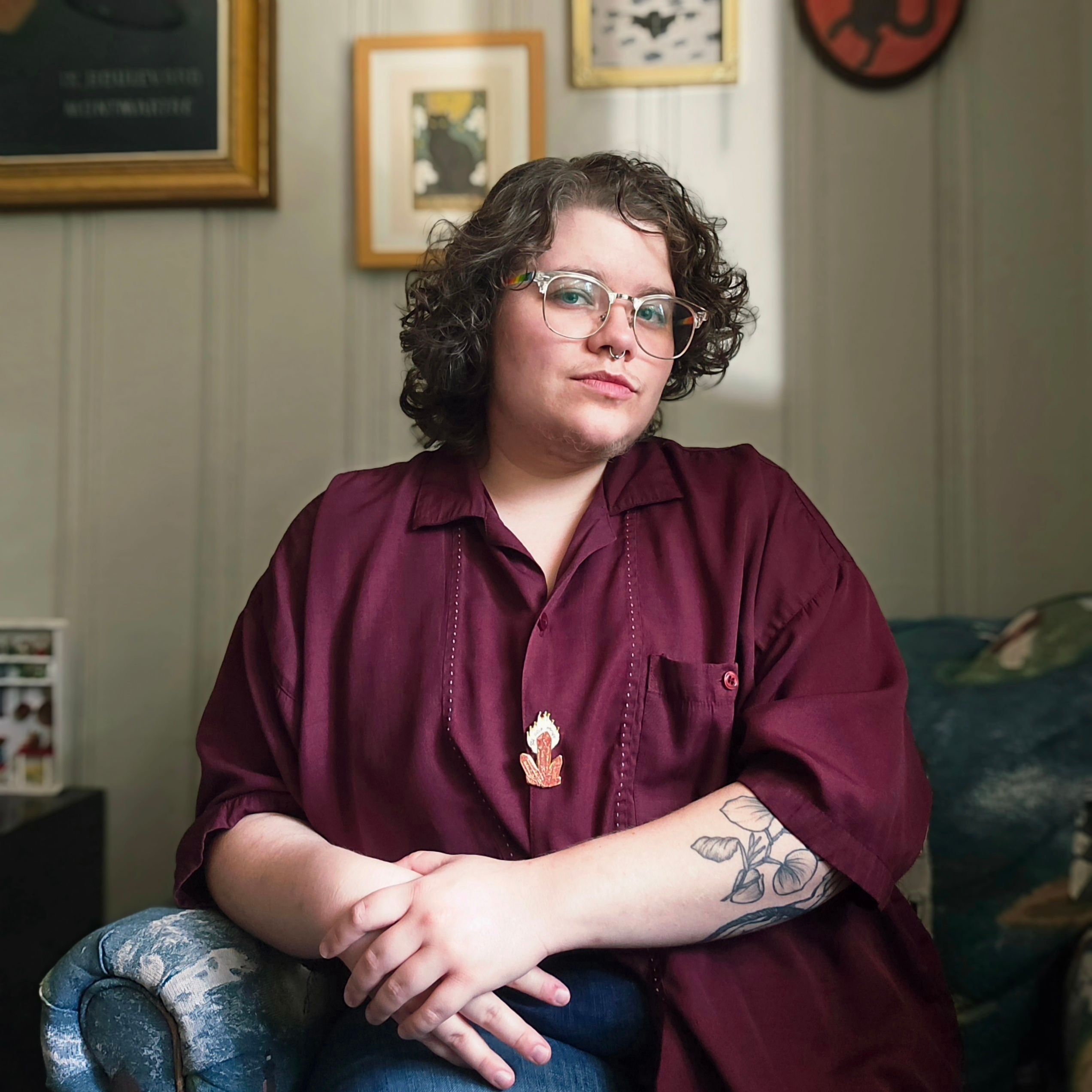Rachel Kupfer: All the Mothers is very different from your first novel, Last Day. Last Day is vast, a celebration of life and earth, about an annual holiday for the last day of earth. Whereas Last Day has, I think, three main storylines, with characters ranging from tattoo artists to astronauts on the International Space Station, All the Mothers follows one storyline. Last Day takes place over the course of one day, All the Mothers over a couple of years. They both convey a sense of urgency, but it’s such different types of urgency—one about time, the other, survival. (Though, please correct me if you disagree with any of this—it’s been a while since I read Last Day in full.) And All the Mothers in some ways feels lighter than Last Day—at least in terms of the way the reader feels after leaving the book. Were these intentional decisions you made when starting to think about this project?
Domenica Ruta: In 2019, after LD was released and neither critical attention nor sales were very encouraging, I feared if I didn’t write something commercial next, I might never get a chance to publish a book again. This is the state of big four publishing today. The number of writers who are allowed simply to pursue their obsessions as far as their imaginations will take them is shrinking, and so I made a practical decision to write something commercial so that I might buy my way back onto that list of writers allowed to be weird and ruminative. My first stabs at this were a murder mystery with themes of toxic female competition and violence, a la the TV show Yellowjackets, and another story that was the exact opposite of this, about women helping women, creating kinship networks from scratch. Then the pandemic hit, and I was too depressed and exhausted to sit down with murderous hatred during the few hours a month I had to write. (I had a kindergartener and a newborn at the time.) I just wanted to write something joyful and fun, something easily digestible. So, I commenced my commercial beach read. Which is funny because I read John Banville and Jesmyn Ward when I’m on the beach! I had no idea how to do it, but that learning curve was also fun. I can’t say I will do it again. My new WIP is dark and strange like Last Day, but structurally very different. I like to keep things fresh!
RK: I really loved the character development in the novel, especially for Sandy. There are so many ways in which she changes, but one that particularly stood out to me was the idea about one’s relationship with positivity—how positivity can be harmful or even toxic (enabling one to keep their head under a rock), how it can be in some ways a form of gas lighting (overly positive sorority sisters who don’t let Sandy talk about relationship red flags), but also how positivity can keep you afloat, its value. Can you talk more about the character development and how you thought about how her relationship toward positivity changed? Do you think it was motherhood that caused these changes? Or the authentic relationships she built with the other mothers? (Or both?)
DR: Thank you so much for this question. This is something I thought long and hard about when drafting the book, and I’m glad you noticed! Sandy’s core wound is revealed on the first page, when she says, “this is not the life I dreamed of as a little girl.” The wound is not that her life strayed from that version, it is the false premise her dream had been based on from the start. Heteropatriarchy, like microplastics, is just in her, causing her to suffer through an inauthentic life up until her 30s. Toxic positivity is one of her most threadbare costumes she wears in that inauthentic life. All of this is exacerbated by her friend group, who I modeled on some of my own experiences and my observations of my sister’s experiences – they’re like a cheering squad that is very loyal to each other over time but not committed to the honesty or depth of true intimacy. It’s so isolating and keeps people stuck for so long, which is what happens to Sandy. Then her life explodes through both the death of her mother and her unplanned pregnancy, and she can’t ignore the cracks in this false life anymore. Finding true intimacy with women who demand her whole, authentic self shores up this new perspective for her - so the short answer is both.
RK: One of the main challenges for all mothers in All the Mothers is (the cost of) childcare. In a way, the need for (guilt-free) childcare brings these women together more than anything else. It’s an invisible burden for most mothers/parents but especially single mothers. Not to get political (though in many ways, your novel is a political statement), it’s a very timely theme, as the cost of childcare rises and access to abortion decreases. Did you have any fears or worries about addressing this topic so head on?
DR: In high school we read a lot of social novels as part of our American history class, and as didactic as they can be I can’t help loving them. Sinclair’s The Jungle and Wright’s Native Son, Steinbeck and Stowe, and all those glorious nineteenth-century novels by Dickens, and even Bronte’s Jane Eyre. Art for art’s sake will always be necessary and important, but right now we are in extreme times. For poor, BIPOC, disabled, queer, and marginalized people it’s always been bad, and now the vast majority of the white middle class is also living in hell. We have to find a way toward each other, find a way through together. So why not water the seeds of social change while writing a commercial beach book? I joke that All the Mothers is a rescue mission for the basic bitch archetype – let’s go get her, shake her out of the stupor cast by both her privilege and her subjugation, and pull her into a more interesting, more fulfilling life and world.
RK: In many ways, I could see All the Mothers ending up on a “banned book” list. Besides the overarching theme of children outside of marriage, you touch upon a lot of important ideas, many of which are currently under attack—sexuality, the existence/acceptance and celebration of trans and non-binary folks, sex-working, self-worth, and desire. I am curious how you are thinking about this as it relates to the rise of books being banned. Was that ever a worry or even a consideration for you? (Would you see it as a badge of honor?)
DR: Bring it on! Some of the best books I’ve ever read are on the banned list. I would be honored!
RK: Even though the book is about motherhood, female relationships are truly at its core. And you show us so many types of female relationships—mother/daughter, grandmother/grandchild, sisters, lovers, co-partners, stepmother/stepdaughter. You show us stereotypical competitive relationships, superficial female relationships, fraught relationships filled with love, and such beautiful, supportive relationships. There is so much toughness and tenderness, survival and thriving and so much joy even within the difficult. How did you manage to balance all these juxtaposing ideas so well? There is so much nuance in the relationships you’ve created. I really enjoyed it!
DR: Thank you! I take this as high praise! It’s funny because in some of the early, less-than-generous reviews posted on a billionaire-owned book platform I shall not name, the criticism is that the book is “too much, too messy, too chaotic.” This is my favorite reverse-compliment. I love messy, chaotic stories filled with complicated relationships. That’s the world I live in, that’s the family I’ve chosen and created, so I simply reflected it here in my book. It’s not for everyone, but for those who are into it, there will be joy and connection in the mess.
RK: I read an interview you did with Poets and Writers after the publication of Last Day, in which you said that one of the challenging things about writing a book is “the way publishing is a performative act of maturation.” Readers can see from one project to the next how an author’s writing has changed. How has your writing changed? And has your idea about what the most challenging thing about writing a book changed since that 2019 interview?
DR: I still believe that. For much of the drafting of this book, I told myself I could publish it under a pseudonym, because part of me was embarrassed to be writing something more commercial and less overtly literary. What would my former classmates in my MFA think?! Oh, the horror! But the truth is, I hope to have a long career in which I get to play around in as many different genres and forms as I can and want. I am currently writing an experimental retelling of a Greek myth and a TV script adaptation of ATM, and in the future I want to publish a collection of short stories, I want to write a children’s picture book, hell, one day I’d like to publish a poem. I remember seeing an exhibit at the Morgan Library on Maurice Sendak’s work as an opera and ballet set designer. There was this blown-up quote of his along the lines of, if you’re not doing something completely different by age 50, what are you doing with your life? I loved that! Growing up in public, growing up on the page, doesn’t always look coherent on the outside, but who cares?
RK: What does your writing process look like? When you started writing this novel, did you know how it was going to end? What, throughout the writing process, changed as you got to know your characters?
DR: My writing process is never stable or consistent, and I have learned to embrace that. It’s the reality of mothers with artistic careers. Starting out I had a clear idea of Sandy – she is an archetype of white heteropatriarchy, she is a basic bitch, and I knew all that would explode once she became a single mother. Everything else in the book was a process of discovery, of sitting down with the work and letting the book tell me what it wants, what shape it would take. I’ve heard writing a novel is a war of attrition, that you write yourself into a destiny with less and less choice. I’d like to reframe that out of war into something closer to a spiritual surrender, of process of trust and letting go. It’s a lot like parenting – you get these kids, you have your own idea of the life you want them to live, but they insist on living their own lives, and if you’re sane, you not only let them, you shower them with love as they make their own destiny. So that’s my process in general, and for this book specifically.
RK: What do you hope that the reader will take away from this novel?
DR: I hope they feel joy and love, I hope they have a great time, and I hope they look around their community and wonder how they can contribute to making our world a place more hospitable for all marginalized people.
